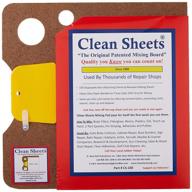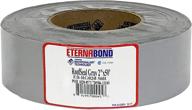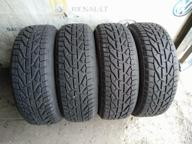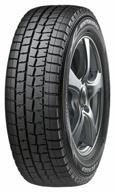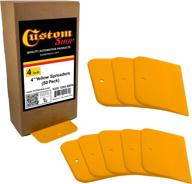Fixing Dents and Scratches on Your Car
If your car has minor dents or scratches on the exterior, you may be able to repair them yourself without taking it to an expensive auto body shop. With the right tools and techniques, you can fix superficial damage and restore your car's appearance.
Top products in 🚙 Car Fillers, Adhesives & Sealants


9 Review



12 Review

Common Causes of Dents and Scratches
There are a few usual suspects when it comes to dents and scratches on your car's body:
- Shopping carts in parking lots
- Hitting curbs while parking
- Road debris like gravel kicking up
- Car doors opening into your vehicle
- Minor fender benders
- Branches or hail falling on the car
Filler vs Touch-Up Paint
Smaller dents can often be fixed using a filler product to push out the dent from the inside. Larger dents or ones that crease or puncture the metal may require professional paintless dent repair. For scratches that go down to the bare metal, apply touch-up paint to prevent rust and corrosion.
Filler Types
Common filler products include:
- Fibreglass filler - blended with hardener and spreads easily for repairs
- Body filler putty - denser putty for smoothing and filling dents
- Spray-on filler primer - quick way to fill in minor dings
Touch-Up Paint Options
Touch-up paint comes in bottles or pens and matches your car's factory colors. Look for:
- Touch-up bottles with brushes for larger scratches
- Finer tip touch-up pens for precision work
- Clearcoat pen for protecting paint repairs
Surface Preparation
Proper preparation is crucial for achieving great results. Follow these steps:
- Wash and dry the repair area thoroughly
- Sand the damaged surface lightly to rough it up
- Use painter's tape to mask surrounding area
- Wipe sanded area with thinner to remove dust
Applying Fillers and Touch-Up Paints
Carefully follow the product directions for best results. Here are some general tips:
- Only apply fillers in very thin layers and allow to fully cure between coats
- Fold the touch-up paint bottle brush applicator for precision control
- Use very light coats of touch-up paint and give plenty of drying time
- Finish with clearcoat to blend paint repairs smoothly
Achieving Professional Looking Repairs
With some care and practice, you can fix minor damage yourself and have your car looking great. Be patient and work slowly to get factory-fresh results. Promptly repairing dents and scratches can save you money and preserve your car's value.
Common Causes of Dents and Scratches on Your Car's Exterior
Driving a car inevitably leads to minor dings, dents and scratches on the exterior. While these blemishes can be annoying, they are usually caused by common sources that all vehicle owners experience.
Parking Lot Dings
Careless drivers in parking lots cause many dents and scratches. Typical culprits include:
- Shopping carts - A sudden breeze can send a runaway cart rolling into a parked car
- Car doors - People frequently swing their doors open too fast and hit adjacent vehicles
- Careless drivers - Drivers not paying attention back into other cars
Parking away from other cars reduces, but doesn't eliminate, parking lot dings. Positioning your car to have the passenger side face the parking lot aisle leaves only the driver's side vulnerable.
Low Curbs and Speed Bumps
It's easy to misjudge distance and scrape a wheel on curbs or speed bumps. The results are scrapes and scratches on wheel rims. Going too fast over bumps also bottoms out the undercarriage on the pavement, causing scrapes.
Carefully maneuvering around curbs and slowing down for bumps prevents curb rash and undercarriage scrapes. Consider using wheel rim protector bands which cushion the blow.
Road Debris
Gravel, rocks and other debris on the road get flung off tires of cars ahead and pepper following vehicles. These hits cause little chips and dings in the paint. Road maintenance crews also kick up gravel that dents cars.
Following at a safe distance helps lessen stone chips. However, they are hard to avoid completely. Touch-up paint pens can quickly fix stone chips before they rust or spread.
Branches and Hail
Falling tree limbs during storms drop onto unsuspecting cars below. The hits leave both dents and deep scratches. Hail is also notorious for inflicting dimpled dents across the entire exterior surface.
Since you can't control the weather, the best prevention is to park inside a garage. If no garage is available, commercial car covers offer some protection.
Minor Collisions
Low speed fender benders with other cars or objects like fence posts result in scrapes and dents. Parallel parking mishaps also ding and scratch bumpers.
Being an alert driver reduces fender benders. However, when a collision happens, exchanging insurance information ensures the other party pays for repairs.
While dings and dents are unsightly, they are largely unavoidable parts of normal vehicle use. Following defensive driving practices and using touch-up paint reduces their occurrence. Promptly fixing new damage keeps your car looking its best.
Difference Between Fillers and Paint Touch-Up Products
When it comes to fixing minor dents and scratches on your car's exterior, you have two main options - fillers and touch-up paints. Knowing when to use which product will lead to the best repairs.
Another interesting products
Filler Products
Fillers are used to repair minor dents and smooth uneven surfaces:
- Fibreglass filler - Lightweight spreads easily and cures quickly
- Body filler putty - Thick for rebuilding dented areas
- Spray filler primer - Quick way to fill small dings
Fillers chemically harden to fill in dents rather than just covering them up. They bond to clean bare metal and many types of existing finishes. Multiple thin layers are applied until the surface is smooth and even.
When to Use Fillers
Fillers are ideal for:
- Minor dings and dents where the metal isn't creased or punctured
- Smoothing small areas of uneven bodywork
- Filling small holes from trim removals
Applying paint over fillers produces a repaired surface indistinguishable from the surrounding area.
Similar products


9 Review

Touch-Up Paint
Touch-up paint comes in small bottles or pens and matches your car's factory colors. It's formulated to bond to existing finishes.
Types of Touch-Up Paint
- Bottles with brush - For larger paint chips and scratches
- Fine tip pens - For precision filling of stone chips
- Clearcoat pens - To recreate the clearcoat layer over repairs
When to Use Touch-Up Paint
Touch-up paint works best for:
- Stone chips where bare metal is exposed
- Fixing light surface scratches
- Covering exposed metal after filler repairs
Touch-up paint matching your factory color hides damage undetectable to the eye. Clearcoat pens are essential for blending repairs.
Key Differences
Here are the main differences between fillers and touch-up paint:
| Fillers | Touch-Up Paint |
|---|---|
| Repair by filling dents and uneven areas | Repair by covering scratches and exposed metal |
| Provide strong structural repairs | Offer cosmetic repairs only |
| Can be sanded, shaped and smoothed | Just brushed on without modifications |
Understanding when to use fillers vs touch-up paint for a specific type of damage allows DIYers to achieve professional looking paint repairs.
How to Properly Prepare Damaged Areas for Repair
Proper preparation is crucial to achieving great results when repairing dents, dings or scratches on your car. Taking time to correctly prep the damaged area will allow fillers and touch-up paint to adhere and perform their best.
Wash the Repair Area
Thoroughly wash the damaged surface using soap and water. This removes any dirt, grease or wax reside that could impede products from bonding. Fully rinse and dry the area after washing.
Sand the Surface
Use 400-600 grit sandpaper to scuff up the damaged area and surrounding paint. This roughs up the surface so repair products grip better. Be sure to sand any paint chips down to solid edges.
Clean and Degrease
Wipe the sanded surface with a tar and grease remover or other degreasing solvent. This eliminates any traces of oil or polish that could cause adhesion issues. Let the area fully dry.
Apply Painter's Tape
Mask off the undamaged area surrounding your repair using painter's tape. This protects good paint from drips and creates a sharp paint line after removing the tape.
Tips for Applying Tape
- Use high-quality painter's tape to prevent peel off
- Apply tape in straight lines along body lines
- Burnish tape edges to maximize adhesion
Final Wipe with Thinner
Give the sanded surface one final wipe using paint thinner orprep solvent. This gives a perfectly clean area for repairs to adhere properly. Let evaporate fully before applying any products.
Work in a Dust-Free Area
Find a work area sheltered from any wind or breeze which could blow dust into freshly applied filler or paint. A garage or carport are good choices.
Follow Safety Precautions
Take steps to protect yourself when prepping and repairing:
- Work in a well-ventilated area
- Wear a NIOSH-approved respirator mask
- Use solvent-resistant gloves
- Wear safety goggles or glasses
Doing the prep work correctly ensures your car repairs have maximum adhesion and a blemish-free finish.
Tips for Selecting the Right Filler or Touch-Up Paint
Choosing the correct filler and touch-up paint for your car's surface repair is important to achieve invisible mends. Consider these tips when selecting products:
Assess the Damage
Look closely at the type and extent of damage to determine if filler, paint or both are needed. Minor dents and dings just need filler while scratches exposing bare metal require touch-up paint.
Match Your Factory Paint
Use touch-up paint that exactly matches your vehicle's factory colors. Check color codes on door jamb tags if unsure. Avoid universal or generic touch-up colors which won't blend perfectly.
Consider Finish Types
Ensure fillers and paints work with your car's finishes:
- 1K Primers - Adhere well to original factory finishes
- 2K Primers - Needed for aftermarket paint or clearcoat
- Gloss, metallic, pearl - Require compatible paint
Select Formulas for Surfaces
Get products designed for your car's body materials:
- Steel panels - Most fillers and paints work
- Aluminum, magnesium - Require special formulas
- Plastic, composite - Often need flexible fillers and paint
Consider Environmental Factors
Choose paint that withstands your climate conditions:
- Extreme sun - Maximum UV resistance prevents fading
- Road salts - Formulas resist corrosion and wear
- Temperature swings - Flexible formulas move with metal
Buy Enough for Multiple Coats
It takes several coats of filler and paint to blend repairs smoothly. Purchase enough to complete the job without running out.
Take time to get the right products so you only have to tackle the job once. Your car will look fantastic when repairs are undetectable.
How to Use Amazon Prime to Buy Car Fillers, Adhesives & Sealants
If you need to repair dents, scratches or other exterior damage on your vehicle, Amazon Prime makes it easy to get all the fillers, adhesives and sealants you need delivered fast and free.
Search for Automotive Repair Products
Amazon Prime has a huge selection of top brands for auto body fillers, paints, adhesives and sealants. Search for specific product names or broader categories like "automotive touch up paint" or "car dent repair products." Filter by Prime eligibility to see options with free two-day shipping.
Compare Products and Prices
Browse through product listings to compare brands, formulations, sizes and pricing. Check product details and read reviews from other customers to help select the best choices for your repair project. Stick to well-rated products from established brands for quality results.
Add Items to Cart
When you’ve found the right body fillers, paint pens, adhesives and sealants for your car repair job, add them to your cart. Estimate how much you’ll need but it’s better to overbuy than run out mid-project. Multiple thin coats of products like paint and primer are needed for proper blending.
Select FREE Two-Day Shipping
At checkout, if you are an Amazon Prime member in good standing, delivery should automatically be set for free two-day shipping. Double check that Prime delivery is selected to get your products rapidly with no additional costs.
Track Your Package
Once your order ships, you can track its progress through the Amazon app or website. Prime shipping ensures you’ll have your car repair supplies in just two days in most cases. Plan your project timeline accordingly.
With Prime’s vast selection, free 2-day shipping and easy returns, it’s the ideal way to get everything you need for DIY car exterior repairs delivered right to your door.
Car Dent Puller
Car fillers are a great solution for those looking to say goodbye to car dents and scratches. Bondo Glazing and Spot Putty and Permatex 25909 Liquid Metal Filler are two popular options available on Amazon. AutoZone provides a guide on how to fix dents using Bondo Body Filler. Car Dent Filler Putty is another easy-to-use option for repairing minor scratches. YouTube also offers tutorials on how to repair dents with body filler and how to remove dents from your car6.





